At the end of this lesson-
1. You will be able to explain function.
2. You will be able to explain library function and user defined function.
3. You will be able to explain the importance of using function.
4. You will be able to explain recursive function and it's advantages and disadvantages.
Function: A function is a group of statements that together perform a specific task. A function that take inputs, do some process and produces a output.
Syntax of a function:
Function declaration: A function declaration tells the compiler about a function's name, return...
Read More
Fifth Chapter
Fifth Chapter Lesson-19: Array in C programming language
At the end of this lesson-
1. You will be able to explain array.
2. You will be able to explain types of array.
3. You will be able to declare an array and assign the value of that array.
4. You will be able to explain the advantages and disadvantages of using array.
Array: Array is a kind of data structure which is a collection of variables of same data type. Array is called derived data type. An array is used to store group of data of same data type. Types of array-
1. One-dimensional array
2. Multidimensional array (two-dimensional,...)
ONE-D...
Read More
Fifth Chapter Lesson-18: ‘continue’ statement, ‘break’ statement and ‘goto’ statement
At the end of this lesson-
1. You will be able to write a program using 'continue' statement.
2. You will be able to write a program using 'break' statement.
3. You will be able to write a program using 'goto' statement.
'continue' statement: The continue statement is used inside loops to bring the program control to the beginning of the loop. When a continue statement is encountered inside a loop, statement skips some lines of code inside the loop body and continues with the next iteration. It is mainly used for a condition so that we can skip some code for a particula...
Read More
Fifth Chapter Lesson-17: Loop Control Statement Related programs.
At the end of this lesson-
1. You will be able to write a program for printing numbers from 1 to 10. Or
You will be able to write a program for printing the 1 2 3 4 5 6 7 8 9 10 Sequence.
2. You will be able to write a program for printing numbers from 1 to n. Or
You will be able to write a program for printing the 1 2 3 4 - - - - n Sequence.
3. You will be able to write a program for printing odd numbers from 1 to 10. Or
You will be able to write a program for printing the 1 3 5 7 9 Sequence.
4. You will be able to write a program for printing odd numb...
Read More
Fifth Chapter Lesson-16: Loop Control Statements in C programming language
At the end of this lesson-
1. You will be able to explain loop.
2. You will be able to explain loop control statements.
3. You will be able to explain for, while and do-while loop control statements.
4. You will be able to differentiate between while and do-while loop control statements.
Loop: Loops are used in programming to repeat a block of code multiple times or until a specific condition is false.
Types of loop:
1. Infinite loop: The loop that repeat continuously and never end. A loop becomes an infinite loop if a condition never becomes false.
2. Fin...
Read More
Fifth Chapter Lesson-15: Conditional Control Statement Related programs
At the end of this lesson-
1. You will be able to write a program for determining an integer number is whether even or odd.
2. You will be able to write a program for determining a number is whether positive or negative.
3. You will be able to write a program for determining a year is whether leap year or not leap year.
4. You will be able to write a program for determining larger number between two numbers.
5. You will be able to write a program for determining LCM of two integer numbers.
6. You will be able to write a program for determining GCD of two integer numbers.
...
Read More
Fifth Chapter Lesson-14: Conditional Control Statements in C language
At the end of this lesson-
1. You will be able to explain control statement.
2. You will be able to explain different control statements.
3. You will be able to explain conditional control statement details.
4. You will be able to write program using conditional control statement.
Control statements: A control statement is a statement that determines whether other statements will be executed. Control statements control the flow of program. They make it possible to make decisions, to perform tasks repeatedly or to jump from one section of code to another.
Contr...
Read More
Fifth Chapter Lesson-13: Basic Mathematical problem related program
At the end of this lesson-
1. You will be able to write a program for adding two numbers.
2. You will be able to write a program for subtracting two numbers.
3. You will be able to write a program for multiplying two numbers.
4. You will be able to write a program for dividing two numbers.
5. You will be able to write a program for converting temperature from Celsius to Fahrenheit.
6. You will be able to write a program for converting temperature from Fahrenheit to Celsius.
7. You will be able to write a program for determining area of a triangle where base and height ha...
Read More
Fifth Chapter Lesson-12: Input and output functions in C programming language
At the end of this lesson-
1. You will be able to use input and output functions in c program.
2. You will be able to describe formatted and un-formatted input-output functions.
3. You will be able to explain printf() and scanf() functions details.
Input and Output functions in C programming language:
Input means to provide some data to be used in the program and Output means to display data on screen or write the data to a file. Input functions are used to read any given input and Output functions are used to display data on screen.
C programming language pro...
Read More
Fifth Chapter Lesson-11: Operators and expressions of C language
At the end of this lesson-
1. You will be able to explain operators.
2. You will be able to describe different operators and their uses.
3. You will be able to explain expressions.
4. You will be able to explain the precedence and associativity of operators.
Operator: An operator is a symbol that tells the compiler to perform specific mathematical or logical operations. In other words we can say that an operator operates the operands.The data items on which operators act upon are called operands.Operators are used in programs to manipulate constant and operands.
...
Read More
Fifth Chapter Lesson-10: Data type, token, keyword, constant and variable
At the end of this lesson-
1.You will be able to explain data type and it's classification.
2. You will be able to explain memory range and format specifier of data type.
3. You will be able to describe the keywords of 'C' programming language.
4. You will be able to declare variable and constant in 'C' program.
5. You will be able to describe the rules of declaring variable in 'C' program.
Data Type: A data type specifies the type of data that a variable can store such as integer, floating, character, etc. Each data type requires different amounts of memory an...
Read More
Basic concept of ‘C’ programming language
At the end of this lesson-
1.You will be able to explain basic concept of 'C' programming language.
2. You will be able to describe the characteristics of 'C' programming language.
3. You will be able to explain the basic structure of a 'C' program.
4.You will be able to analyze different parts of a 'C' program.
Basic concept of 'C' programming language: 'C' is a general-purpose, structured or procedure, high-level language that was originally developed by Dennis M. Ritchie to develop the UNIX operating system at Bell Labs. It is also popular as mid level language. C w...
Read More
Fifth Chapter Lesson-8: Program Design Model.
At the end of this lesson-
1.You will be able to explain program design model.
2. You will be able to explain structured or procedure programming model.
3. You will be able to explain object oriented programming model.
4. You will be able to explain visual programming model.
5. You will be able to explain event driven programming model.
Program Design Model: Some special rules or methods or processes are followed by the programmer to develop a program to make it more efficient and easier to understand and modify.These rules or processes or methods are called progr...
Read More
Fifth Chapter Lesson-7: Loop Related algorithm & flowchart.
At the end of this lesson-
1. You will be able to write algorithm and flowchart for printing numbers from 1 to 10. Or
You will be able to write algorithm and flowchart for printing the 1 2 3 4 5 6 7 8 9 10 Sequence.
2. You will be able to write algorithm and flowchart for printing numbers from 1 to n. Or
You will be able to write algorithm and flowchart for printing the 1 2 3 4 - - - - n Sequence.
3. You will be able to write algorithm and flowchart for printing odd numbers from 1 to 10. Or
You will be able to write algorithm and flowchart for printing the 1 3 5 7 9 Sequence.
4. You wil...
Read More
Fifth Chapter Lesson-6: Conditional Control Statement Related algorithm & flowchart.
At the end of this lesson-
1. You will be able to write algorithm & flowchart for determining an integer number is whether even or odd.
2. You will be able to write algorithm & flowchart for determining a number is whether positive or negative.
3. You will be able to write algorithm & flowchart for determining a year is whether leap year or not leap year.
4. You will be able to write algorithm & flowchart for determining larger number between two numbers.
5. You will be able to write algorithm & flowchart for determining LCM of two integer numbers.
6. You will be able...
Read More
Fifth Chapter Lesson-5: Basic Mathematical problem related algorithm & flowchart.
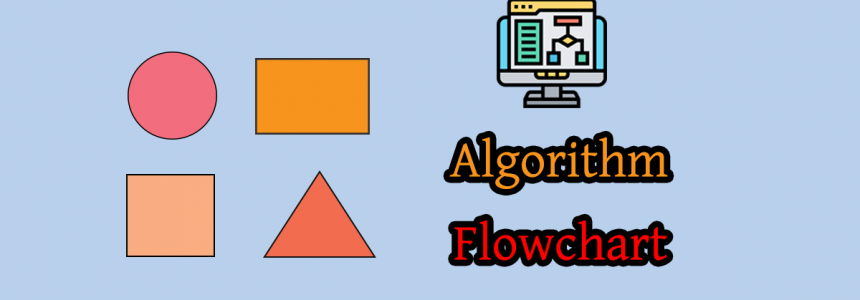
At the end of this lesson-
1. You will be able to write algorithm & flowchart for adding two numbers.
2. You will be able to write algorithm & flowchart for subtracting two numbers.
3. You will be able to write algorithm & flowchart for multiplying two numbers.
4. You will be able to write algorithm & flowchart for dividing two numbers.
5. You will be able to write algorithm & flowchart for converting temperature from Celsius to Fahrenheit.
6. You will be able to write algorithm & flowchart for converting temperature from Fahrenheit to Celsius.
7. You will be abl...
Read More
Algorithm, Flowchart and Pseudo code
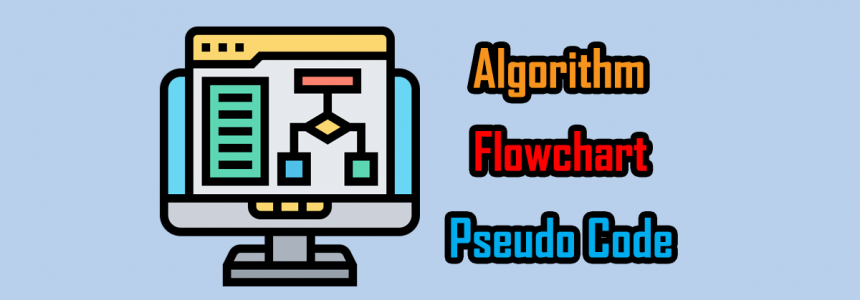
At the end of this lesson-
1. You will be able to explain algorithm and flowchart.
2. You will be able to describe the conditions for writing algorithm.
3. You will be able to describe the advantages of writing algorithm and flowchart.
4. You will be able to describe the rules of creating flowchart.
5. You will be able to describe the use of symbols used in flowchart.
Go for Bangla Version
Algorithm:
An algorithm is a sequence of finite number of logical steps to solve a particular problem or algorithm is an ordered set of unambiguous logical steps that produces a res...
Read More
Fifth Chapter Lesson-3: Program organization and Steps of developing a Program.
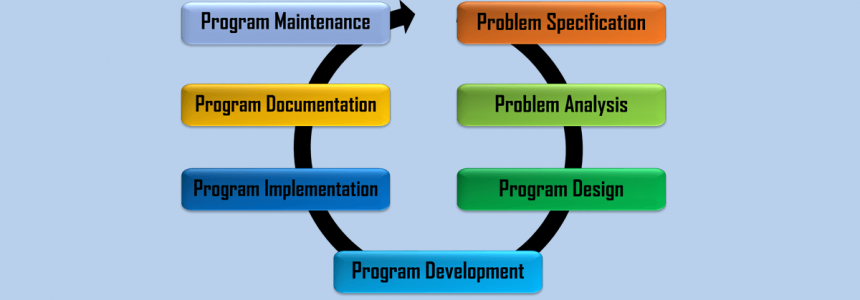
At the end of this lesson-
1. You will be able to explain the organization of program.
2. You will be able to describe the characteristics of a standard program.
3. You will be able to explain the steps of developing a program.
Go for Bangla Version
Organization of Program:
Every complete program has three essential parts which make a program standard through interaction with each other parts. These parts are-
Input: Every program should have input system to process.
Process: Every program should have processing system taking inputs from the user.
Output: Ev...
Read More
Translator Programs । Compiler, Interpreter & Assembler
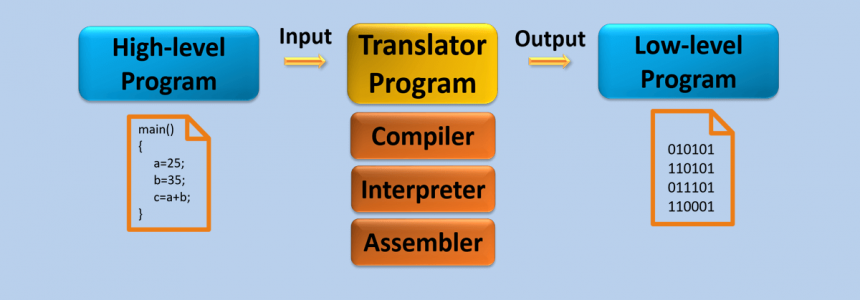
At the end of this lesson-
1. You will be able to explain translator program.
2. You will be able to describe compiler and it's function, advantages and disadvantages.
3. You will be able to describe interpreter and it's function, advantages and disadvantages.
4. You will be able to differentiate interpreter over compiler.
5. You will be able to describe Assembler and it's functions.
Go for Bangla Version
Translator Program:
Any machine including computer can understand only 0 and 1. This means that only instructions or programs written in machine language can be unders...
Read More
Programming languages of different generations and levels.
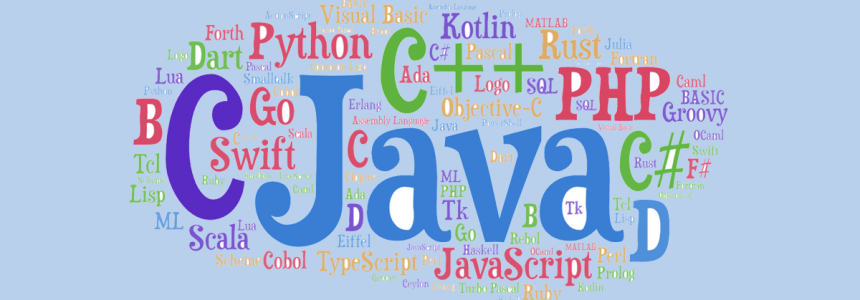
At the end of this lesson-
1. You will be able to describe programming languages of different generations.
2. You will be able to describe programming languages of different levels.
3. You will be able to explain characteristics, advantages and disadvantages of machine language.
4. You will be able to explain characteristics, advantages and disadvantages of assembly language.
5. You will be able to explain characteristics, advantages and disadvantages of High level programming language.
Go for Bangla Version
A computer system usually has two parts. One is hardware and ...
Read More
HSC ICT Chapter 5 : Comprehension Based Questions & Answers
How to write answers to a comprehension based question?
⇒ 'Comprehension' refers to the ability to understand the meaning of a topic. It can be the ability to understand any information, policy, formula, rule, procedure, process etc.
⇒ Perceptual level is the second level of thinking skills. This question is given in 'b'. Such questions do not directly ask for textbook-like details. So the student has to explain or describe the content in his own way.
⇒ Marks of comprehension based question will be 2. Out of which 1 is for knowledge and 1 is for comprehension.
⇒ Comprehension based q...
Read More
Fifth Chapter: Knowledge Based Questions & Answers
What is program?
What is programming?
What is programmer?
What is programming language?
What is 4GL?
What is high level programming language?
What is machine language?
What is assembly language?
What is mnemonic?
What is translator program?
What is assembler?
What is compiler?
What is interpreter?
What is debugging?
What is testing?
What is syntax error?
What is logical error?
What is algorithm?
What is flowchart?
What is pseudo code?
What is OOP?
What is variable?
What is constant?
What is keyword?
What is data type?
...
Read More
